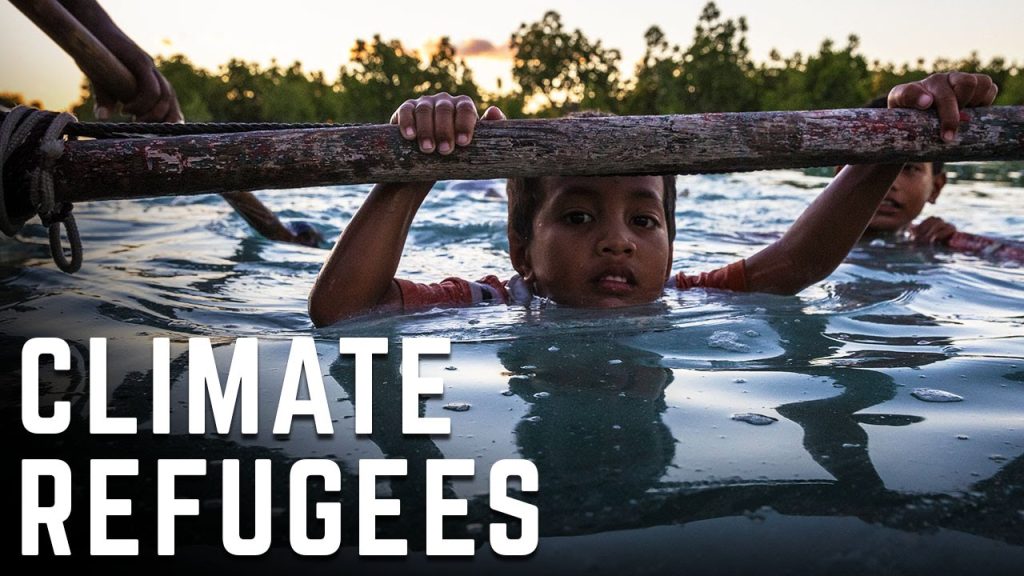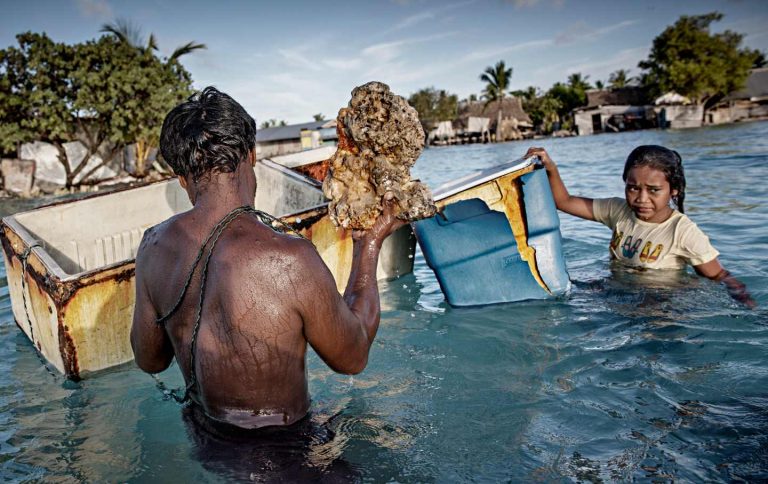Imagine losing your annual harvest and crops due to unprecedented heat waves, being forced to leave your home because of rising sea levels, or even losing your child to famine. This is the harsh reality for those living on the front lines of climate change, experiencing these crises first-hand. For them, climate change is not a distant threat—it’s happening right now.
In many cases, these individuals are compelled to leave their homeland and live as refugees. Unfortunately, they are not protected by international laws. The term “climate refugees” may seem like a recent concept, but it has actually been part of public discourse since 1985. Essam El-Hinnawi, an expert from the United Nations Environment Programme (UNEP), defined “environmental refugees” as people who have been forced to leave their traditional habitat, either temporarily or permanently, due to significant environmental disruptions (both natural and human-induced) that threaten their existence or severely affect their quality of life.
The current definitions of refugee status under international law, specifically the 1951 Refugee Convention, focus on providing protection to individuals facing persecution based on race, religion, nationality, political opinion, or membership in a particular social group. This means that those forced to leave their homelands due to climate change or natural disasters currently lack international legal protection. Unlike those fleeing persecution, climate refugees do not meet the criteria established by the Refugee Convention, leaving them in a precarious legal situation without formal recognition or the associated rights and protections.
A Case in Point: Ioane Teitiota
According to the report of the World Economic Forum, Ioane Teitiota from Kiribati sought refugee status in New Zealand, claiming to be a “climate refugee” as his home country faces submersion from rising sea levels. Despite his efforts, New Zealand denied his application in 2015 and returned him to Kiribati. Teitiota then filed a complaint with the UN, arguing that his right to life was violated by this repatriation.
In 2016, the UN Committee on Civil Liberties upheld New Zealand’s decision, stating that Teitiota did not face an immediate threat to life. However, the committee acknowledged that climate change effects, such as rising sea levels, seriously jeopardize the right to life for people in countries like Kiribati. The ruling emphasized that courts must consider these impacts when evaluating repatriation cases involving climate change-affected individuals, marking a significant development for potential climate-related refugee claims.

The Future of Climate Displacement
Climate change is expected to displace around 1.2 billion people by 2050. Although industrialized countries contribute significantly to climate change, they often fail to recognize or accept these migrants as refugees. The absence of legal protection under the current international framework leaves climate refugees vulnerable and without the same rights and support afforded to those fleeing persecution.
The plight of climate refugees highlights a critical gap in international law and protection mechanisms. As the effects of climate change intensify, it is imperative for the global community to address this issue, ensuring that those displaced by environmental factors receive the protection and support they need.



